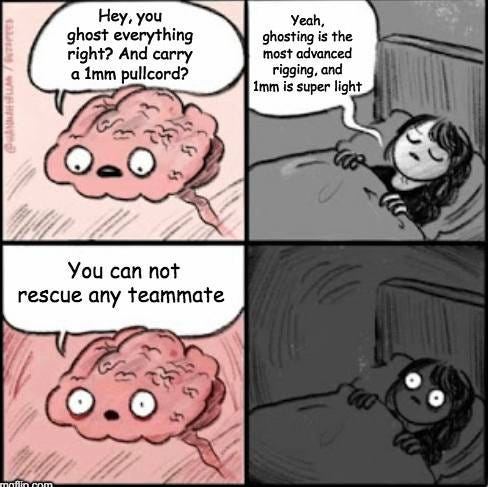Should I use "ghosting"?
Is "ghosting" a technique suitable for mainstream canyoneering?
This is a common question for new and intermediate desert canyoneers. Newer canyoneers see and read about “experienced” canyoneers using “ghosting” and assume that this is a tool that they should strive to learn and adopt. So, should you use ghosting for your canyon trips?
The two sides of the answer:
1. Short and sweet
2. And a longer closer look at your particular group situation
Risk assessment flow diagram. It is not a good idea to use ghosting in C swiftwater canyons, or B standing water canyons with wet disconnects at the bottom of rappels.
There are many situations where TR (Transient Rigging / ghosting) provides advantages, but as with every rigging choice, there are some disadvantages. As you can see from the short and long answers, the disadvantages have to do with Indirect Rescue options, i.e assistance from a teammate if someone on rope needs help or assistance.
In the canyoneering skills progression, formally or informally, self-rescue is a skill that comes later at an intermediate of advanced level, making “ghosting” a bad choice for beginners, or leaders leading beginners.
There are some more up to date techniques that combine releasable rigging with transient rigging (Transient Releasable Rigging: TR+R), but that is a subject for a future post.
(Note: the term ghosting is used here as in 'tails down rigging' i.e throwing all your rope down and rigging ghosting with the end of the rope at the rappel station. The newer TR+R is an updated ghosting concept that retains the ability to perform rescues from the rappel station)



